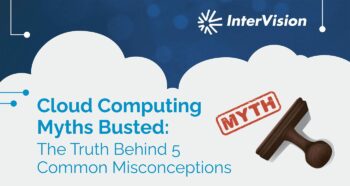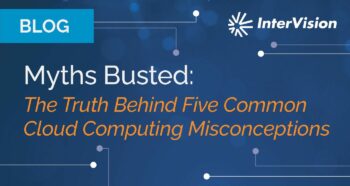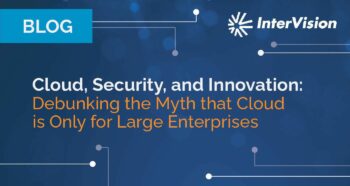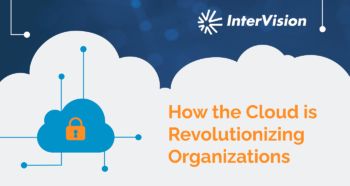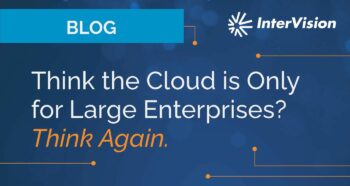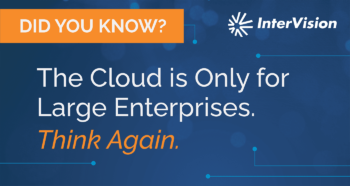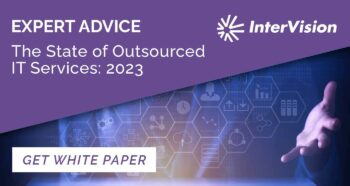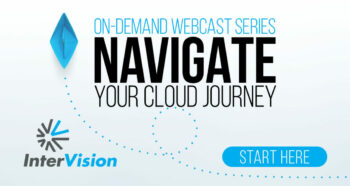As we speak to CEOs, COOs, CIOs, and other business leaders around the country, we find that there are still many myths about technology. So much so that we felt it was time to bust those myths once and for all! Welcome to Myth Busters: Cloud, Security & Innovation! Like the much more famous MythBusters™ TV show, we will dive into several myths and, through interviews, case studies, and data, bust that myth! Follow us over the next six months as we share blogs, podcast interviews, infographics, and more!
To help us identify which myths to bust, we thought it would be fun to ask ChatGPT! If you have not heard of ChatGPT, it is an AI bot that is both conversational AI and generative AI. For more information about ChatGPT, tune into our podcast Status Go for an interview with ChatGPT itself, Status Go: Ep. 204 – An Exclusive Interview with ChatGPT. We took the list of myths ChatGPT provided and sent them to our outstanding sales team and asked them, “Which ones do you hear most often?”
These myths are preventing many businesses from taking advantage of the many benefits of technologies like the cloud can offer. Businesses of all sizes are being asked to transform, reinvent themselves, and innovate. But to do it securely. In this series, we will not only bust the myth, but we will show you the why and the how!
The Cloud is Only for Large Enterprises. Think Again.
Despite the advances in cloud adoption over the last several years, there are still many leaders of small businesses that believe the cloud is only for large, global enterprises. It is interesting to point out that leaders of many large organizations believe the cloud is only for small businesses. As we debunk this myth, we will bring you stories of businesses, both small and large, that have migrated all or some of their IT workloads to the cloud.
Migrating to the cloud can not only improve your security posture but also can spark innovation by providing you access to tools and technology at a fraction of the cost of trying to build them on your premises. Whether you’re a startup looking to scale quickly, or an established small business with limited IT resources, cloud computing can help you to reduce costs, increase efficiency, and improve your overall competitiveness, and we will show you how.
Is it any wonder that reliability is of concern for business leaders? We will attack the myth that the cloud is not reliable and look at ways that leveraging the cloud will improve the reliability and resiliency of your technology stack. Companies of all sizes have seen downtime approach near zero through the redundant architecture employed by cloud providers.
The Cloud is Not Cost Effective. Think Again.
Cost is often a concern for businesses considering the cloud. However, the cost of cloud computing has decreased significantly in recent years, making it more affordable for businesses of all sizes. In addition, cloud computing can help businesses save money by reducing the need for on-premises infrastructure and IT staff. Cloud service providers offer a variety of pricing models to fit different business needs and budgets.
Many companies that believe the cloud is too expensive aren’t asking themselves the right questions. They often compare the costs of their on-premises solutions with a lift and shift migration to the cloud. Others may not include all the costs of their on-premises solutions. Very few are doing a true cost-benefit analysis examining the upside of moving some or all of their technology stacks to the cloud.
The Cloud is Not Secure. Think Again.
Security is one of the biggest concerns businesses have about technology in general. In fact, security is always at the top of the “what keeps you up at night” list for CIOs and CISOs alike. Security is a top concern for many businesses when it comes to cloud computing, but this is often based on a misunderstanding of how cloud security works. While it’s true that cloud computing introduces new security risks, such as unauthorized access or data breaches, cloud providers invest heavily in security measures to protect their customers’ data. This includes state-of-the-art encryption, multi-factor authentication, and regular security audits and assessments. In fact, many businesses find their data more secure in the cloud than it would be if stored on-premises.
The shared security model used by most cloud providers also helps when it comes to the compliance frameworks that many companies find themselves subjected to. The cloud architecture can check many of the boxes of compliance frameworks, allowing the internal team to focus on areas of the business that are under their control.
Cloud Migration is Complicated and Expensive. Think again.
One of the most significant barriers to cloud adoption is the perception that cloud migration is complex and time-consuming. While there are certainly challenges involved in migrating to the cloud, such as selecting the right cloud provider and ensuring a smooth transition of data and applications, there are many resources and tools available to simplify the process. Additionally, many cloud providers offer migration services to help businesses smoothly transition their IT infrastructure to the cloud.
As with many things in the technology space, migrations come down to knowledge and planning. There are many approaches to moving workloads to the cloud, from “lift and shift,” refactoring, and minimal viable refactoring. This is not a one-size-fits-all but can be dependent on the applications and workloads being migrated. Having the knowledge of the cloud provider, the services available, and the target architecture can make the complex more digestible.
The Cloud is Not Reliable. Think Again.
Cost is often a concern for businesses considering the cloud. However, the cost of cloud computing has decreased significantly in recent years, making it more affordable for businesses of all sizes. In addition, cloud computing can help businesses save money by reducing the need for on-premises infrastructure and IT staff. Cloud service providers offer a variety of pricing models to fit different business needs and budgets.
We find that many companies that believe that the cloud is too expensive aren’t asking themselves the right questions. They often compare the costs of their on-premises solutions with a lift and shift migration to the cloud. Others may not include all of the costs of their on-premises solutions. Very few are doing a true cost-benefit analysis that looks at the upside of moving some or all of their technology stacks to the cloud.



